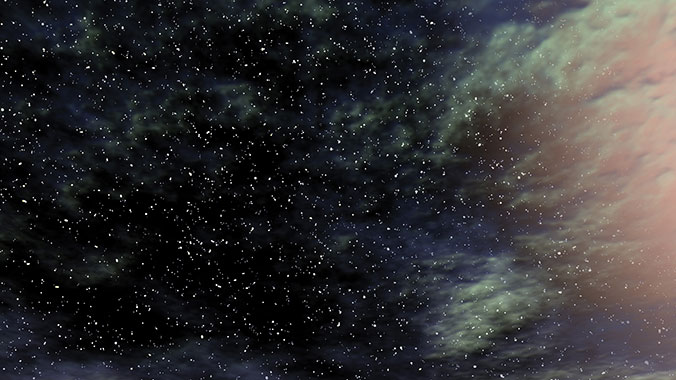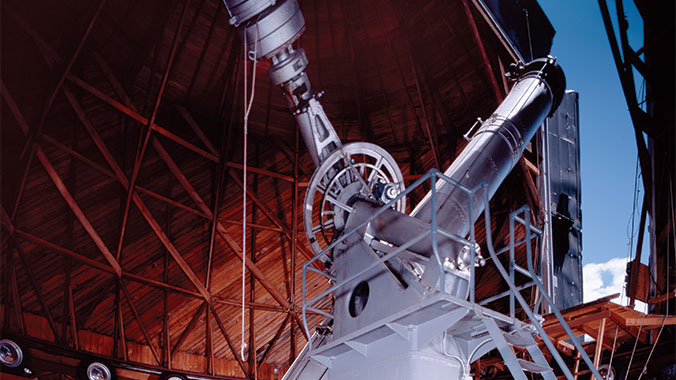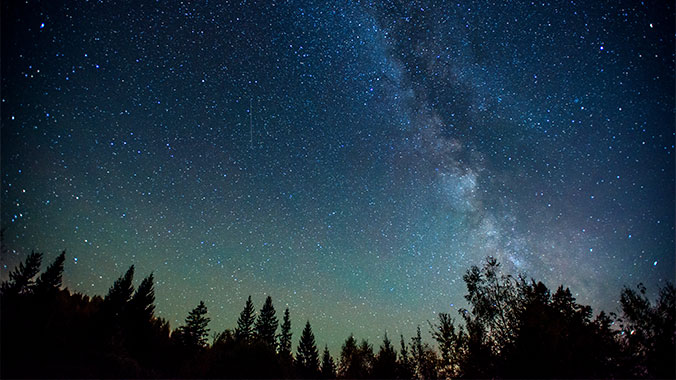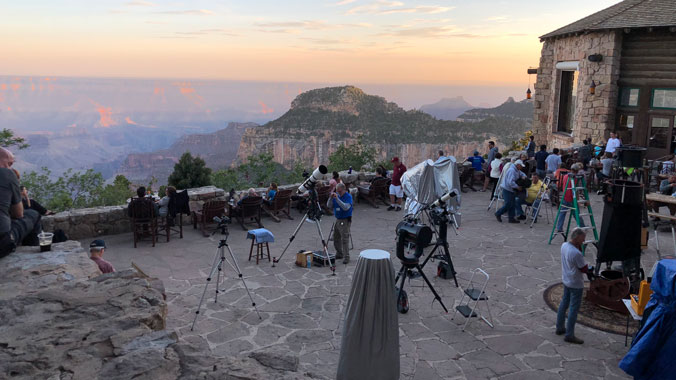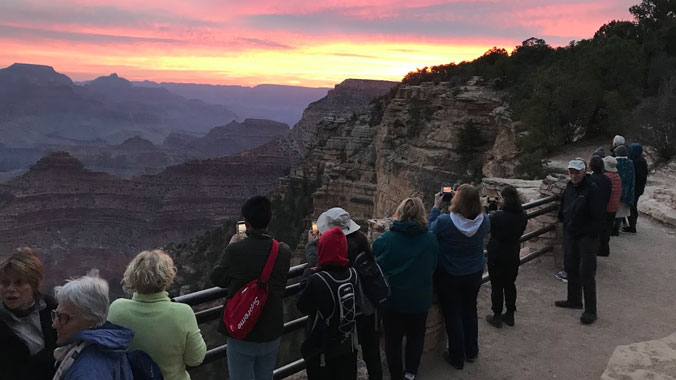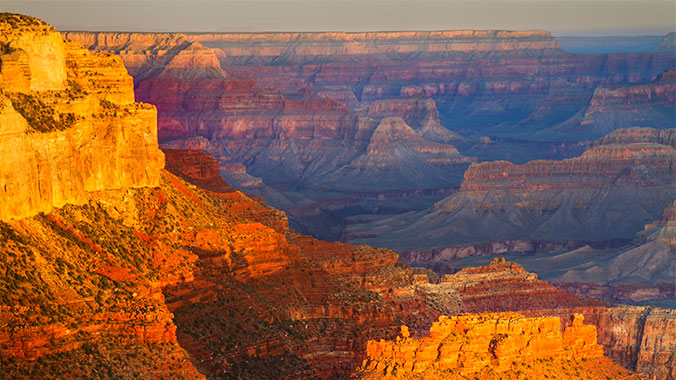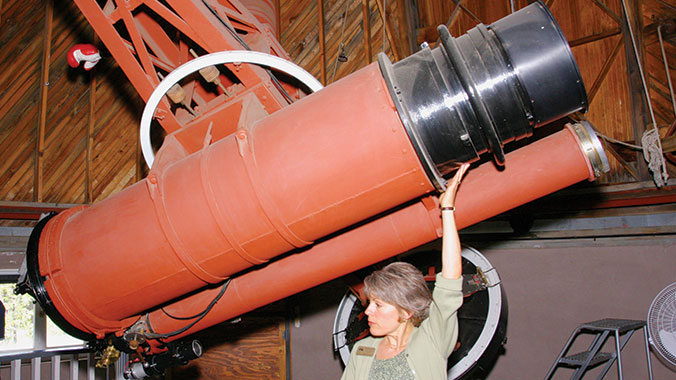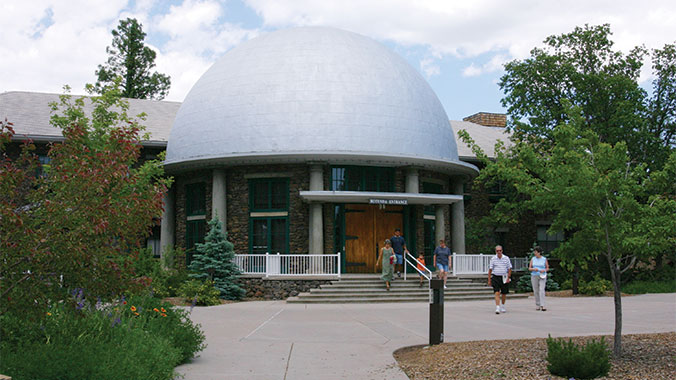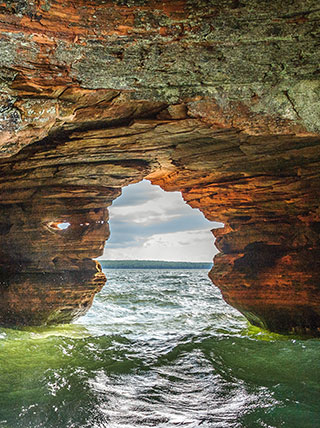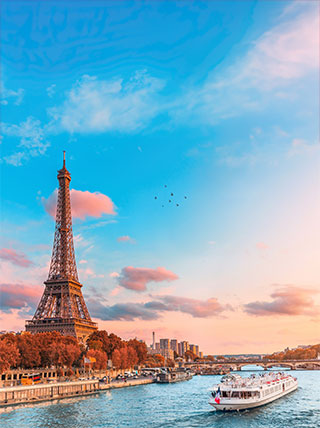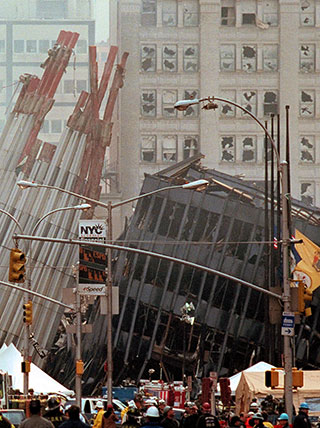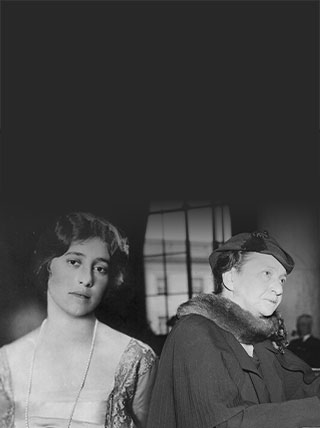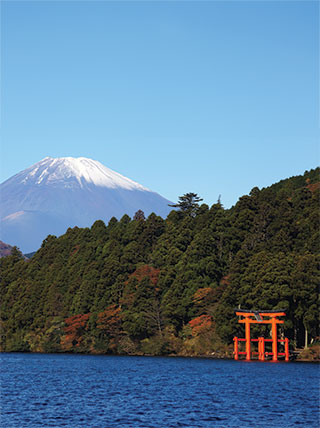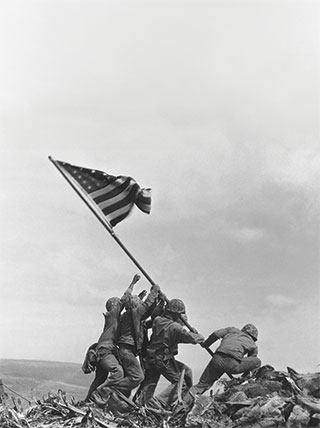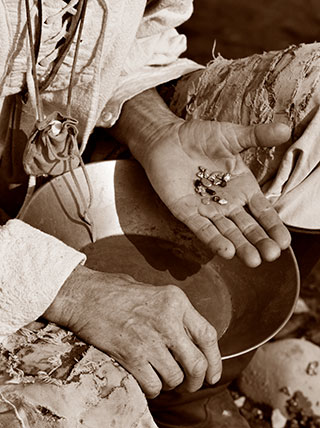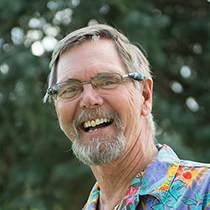
Grand Canyon Star Party: Astronomy at the Edge of the Universe
Enroll with Confidence
We want your Road Scholar learning adventure to be something to look forward to—not worry about. Learn more
Protecting the Environment
We offset a portion of the emissions created by your travel. Learn more
At a Glance
What You'll Learn
- In Flagstaff, a center for astronomical study since the late 1800s, meet astronomers and discuss planetary geology, the origin of the universe, NASA projects and other current topics.
- Visit Lowell Observatory, where Pluto was discovered, and Meteor Crater, the world's best-preserved meteorite impact site, that was used as a training ground for the Apollo astronauts.
- At the Grand Canyon, learn about the geology of this world wonder and national treasure while enjoying walks to its most spectacular viewpoints.

Please note: This expert may not be available for every date of this program.

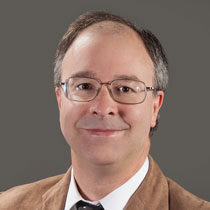

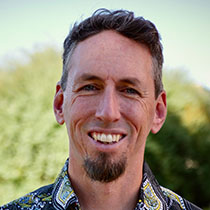
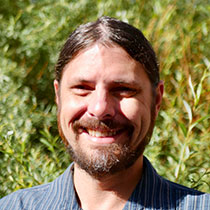
Activity note: Hotel check-in available from 3:00 p.m. Walking less than 1/2 mile roundtrip to dinner.
Afternoon: Program Registration: 5:00 p.m. After you have your room assignment, come to the Road Scholar table in the meeting room to register with the program staff and get your welcome packet containing the up-to-date schedule that reflects any changes, other important information, and to confirm the time and location of the Orientation session. If you arrive late, please ask for your packet when you check in. Orientation: 5:30 p.m. The Group Leader will greet everyone and lead introductions. We will review the up-to-date program schedule, discuss roles and responsibilities, logistics, safety guidelines, emergency procedures, and answer questions. All field trips will be led by our Group Leaders, seasoned and experienced naturalists, unless specified otherwise. All classroom discussions will be led by experts in their fields. Transportation will be in either vans or a motorcoach, depending on group size. Periods in the schedule designated as “Free time” and “At leisure” offer opportunities to do what you like and make your experience even more meaningful and memorable according to your personal preferences. The Group Leader will be happy to offer suggestions. Program activities, schedules, personnel, and indicated distances or times may change due to local circumstances/conditions. In the event of changes, we will alert you as quickly as possible. Thank you for your understanding.
Dinner: After walking to a local restaurant, we’ll have plated meals.
Evening: At leisure. Continue getting to know your fellow Road Scholars, settle in, and get a good night's rest for the day ahead.
Activity note: Walking approximately 1 mile throughout the day during group activities; periods of standing; mostly flat, paved sidewalks; elevation gain of about 100 feet. An additional elective walk of just over 1/2 mile will be available for those interested. Getting on/off vehicle; short drives within Flagstaff totaling approximately 8 miles for the day; about 1/2 hours, with stops for activities.
Breakfast: Hotel buffet.
Morning: After shuttling or walking to our classroom at Northern Arizona University, our morning presentation will be given by a university professor on our place in the universe. This lecture will provide an overview of the universe from its origins – Big Bang Theory – to how stars are born, the creation of our solar system, and current discoveries/thoughts on subjects such as dark matter, string theory, and more. We’ll then take a short walk to our lunch location.
Lunch: At the university dining facility on NAU's South Campus.
Afternoon: Returning to the classroom on campus, we’ll settle in for a discussion with a university professor on humans in space, NASA, and the International Space Station. Afterwards, enjoy some free time at the hotel and rest up for stargazing this evening at Lowell Observatory. Later in the afternoon, we'll meet in front of the hotel to board our vehicles and head to dinner.
Dinner: At a local restaurant.
Evening: After dinner, we'll board our vehicles and travel to Lowell Observatory for a walking history field trip led by a Lowell Observatory docent. There, we'll see the 24-inch Clark Telescope that Percival Lowell used to study Mars, the Pluto Discovery Scope, the Rotunda, and the Exhibit Hall. Founded in 1894 by astronomer Percival Lowell, the observatory is one of the earliest built in the U.S.A. As such, and due to its reputation for firsts including, “the first detection of the expanding nature of the universe, the discovery of Pluto, moon mapping for the Apollo program to the moon, the rings of Uranus…” – it holds a special place in both American and global history. The innovations have not ceased, however, evidenced by the impressive 4.3-meter Discovery Channel Telescope, which has been fully functioning since 2015.
Activity note: Driving approximately 45 miles one way to Meteor Crater; about 1.5 hours roundtrip. Walking approximately 1 mile along crater rim; about 1 hour; paved, slightly rolling trail.
Breakfast: Hotel buffet.
Morning: After breakfast, we'll travel east of Flagstaff to Meteor Crater, which is lauded as the first proven and best preserved meteorite impact crater on Earth. We’ll go on an expert-led walk along a portion of the crater’s 2.4 mile circumference, and view the crater from the accessible platform. At the onsite museum, we’ll also have opportunities to visualize the impact event through numerous interactive exhibits, a film recreation in the theater, and a display featuring the largest chunk found of the 150-foot meteor, which weighed several hundred thousand tons. Afterwards, we’ll return to Flagstaff in time for lunch.
Lunch: At the university’s south campus dining facility.
Afternoon: Following lunch, we’ll enjoy two presentations in our campus classroom by an astronomer. The first will be a discussion on objects visible in this week’s night sky. After a short break, we’ll settle in for another presentation, this time focused on amateur telescopes and astronomy.
Dinner: At a local restaurant.
Evening: Enjoy an evening on your own to relax and pack for check out the next morning.
Activity note: Getting in/out of a motorcoach or van (dependent on group size); driving about 110 miles to Grand Canyon; approximately 2.5 hours riding time with a stop along the way. Walking about 2 miles total throughout the day; several short walks at Grand Canyon viewpoints; walking and standing dependent on personal preference in the flat, paved parking lot/telescope viewing area at Mather Point after dark, some curbs.
Breakfast: Hotel buffet.
Morning: Following check-out, we will board our vehicle and begin our journey to the Grand Canyon. En route, we’ll make our first stop at Wupatki National Monument. One of the most scenic ancestral puebloan sites in Northern Arizona. Next we'll stop for some time to stretch our legs and explore independently at the old Cameron Trading Post, set on the edge of the seasonally dry Little Colorado River at the western edge of the Navajo Reservation. A welcomed rest stop, the trading post features a beautiful hidden garden, an in-house Navajo rug weaver, and interesting stone architecture drawing from the various influences of the region.
Lunch: In the Cameron Trading Post dining room.
Afternoon: Our next stop will be at the Desert View Overlook, the location of Mary Jane Colter’s famous Watchtower and some of the best views of the Colorado River. We will have time to explore the watchtower with our naturalist available to answer any questions. Known for her many works for the Fred Harvey Company and the Santa Fe Railroad, Mary Jane Coulter was a female architect in the early 20th century and helped blend Spanish Colonial and Mission Revival architecture with Native American motifs. The Watchtower is an interpretation of a prehistoric “tower kiva’ with lavishly painted interior walls by Hopi artist Fred Kabotie. Back aboard the shuttle, we’ll then follow the eastern expanse of the South Rim enjoying occasional views of the Canyon. Late in the afternoon, we’ll check in to our lodge on the South Rim of the Grand Canyon.
Dinner: In the lodge dining hall.
Evening: After dinner, we'll head to the Visitor Center for the first of our two nights at the Grand Canyon Star Party, which is co-sponsored by Grand Canyon National Park and the Tucson Amateur Astronomy Association (TAAA). To begin, you may choose to attend an astronomy presentation given by an expert in the Visitor Center theater. Alternatively, you may wish to go with our Group Leader on a walk to the rim of the Grand Canyon to watch the sun set. Once it is dark, we’ll stroll to the unlit parking lot of Mather Point on the South Rim where members of the TAAA and friends have set up 40-50 personal telescopes pointed at the skies above. Standing next to each telescope will be an amateur astronomer who is more than willing to share his or her astronomical passions. With the limited light pollution of the Grand Canyon, you will see more than you can imagine! You may also choose to attend one of several guided Constellation Talks, where an astronomer will use a green laser to point out constellations and tell some of their stories. Once you’ve had enough of the night sky, our Group Leader will be happy to shuttle you back to your room.
Activity note: Walking approximately 2 miles during group activities; on our feet for about 4 hours, with opportunities to rest. Walking approximately 1 mile at Grand Canyon Village; about 2 hours; paved, slightly sloping trail; elevation of approximately 7,000 feet with roughly 100 feet of elevation gain; walking and periods of standing up to 2 hours according to personal interest at Star Party.
Breakfast: At the lodge dining hall.
Morning: After breakfast, we will embark on a walking field trip in Grand Canyon Village, where our Group Leader will tell us about the history of each location. Grand Canyon Village includes Verkamps Visitor Center, the El Tovar Hotel, Mary Colter's Hopi House, rock walls and trails built by the Civilian Conservation Corps, the Bright Angel Lodge with its famous geological fireplace, and Kolb Studio.
Lunch: This meal has been excluded from the program cost and is on your own to enjoy what you like. The Group Leader will be happy to offer suggestions. There are a number of dining venues to choose from in the park. If you are interested in dining at the El Tovar Hotel, note that advance reservations are required for both lunch and dinner. These reservations are best made as far in advance as possible (up to one month before). Call 928-638-2631 and ask for the El Tovar dining room, or visit https://www.grandcanyonlodges.com/dine/el-tovar-dining-room-and-lounge/.
Afternoon: Free time. This time has been set aside for your personal independent exploration to see and do what interests you most. The Group Leader will be happy to offer suggestions. You might like to explore the Grand Canyon’s famous South Rim, ride the free Hermit’s Rest Route (Red Line Shuttle), take extended walks along the rim, attend ranger programs, or return for longer visits at any of the historic structures seen on the history walk.
Dinner: In the lodge dining hall.
Evening: After dinner, we'll head up to the Visitor Center for the second of our two nights at the Grand Canyon Star Party. Once again, everyone will be invited to choose between a walk to the rim of the Grand Canyon with our Group Leader to watch the sunset, or to attend an astronomy presentation given by an expert in the Visitor Center theater. Afterwards, we’ll make our way back to the Mather Point parking lot to enjoy looking through the variety of available telescopes, meet other astronomy enthusiasts, attend Constellation Talks, and gaze up at the brilliance of the Grand Canyon’s night sky. Be sure to prepare for check-out and departure in the morning.
Activity note: Hotel check-out by 8:00 a.m. Driving approximately 90 miles to Flagstaff; about 1.5 hours. Expected arrival in Flagstaff at starting hotel by approximately 10:00 a.m.
Breakfast: Hotel buffet.
Morning: After loading our luggage, we’ll gather for a brief program wrap-up session, then set out from the hotel for travel back to the program’s starting hotel in Flagstaff. This concludes our program. If you are returning home, safe travels. If you are staying on independently, have a wonderful time. If you are transferring to another Road Scholar program, detailed instructions are included in your Information Packet for that program. We hope you enjoy Road Scholar learning adventures and look forward to having you on rewarding programs in the future. Don’t forget to join our Facebook page and follow us on Instagram. Best wishes for all your journeys!
Recommended For You


